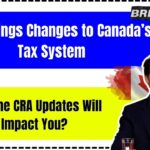$1,400 Checks Coming to a Million Americans: As 2024 comes to a close, the IRS is preparing to issue $1,400 checks to nearly one million Americans. These payments are part of the Recovery Rebate Credit from 2021, offering financial relief to those who missed out on previous stimulus payments. Are you eligible? Here’s everything you need to know about this financial boost, including eligibility, timelines, and how to ensure you receive your payment.

$1,400 Checks Coming to a Million Americans
| Topic | Details |
|---|---|
| Amount | $1,400 per eligible person |
| Eligibility | Filed 2021 tax return but didn’t claim the Recovery Rebate Credit |
| Income Thresholds | Up to $75,000 (Single), $150,000 (Married), $112,500 (Head of Household) for full payments |
| Payment Method | Direct deposit or mailed paper checks |
| Timeline | Payments issued starting December 2024, arriving by January 2025 |
| Official Source | IRS Recovery Rebate Credit |
The $1,400 checks represent a vital opportunity for many Americans to receive overdue financial relief. By understanding the eligibility criteria and staying proactive, you can ensure these funds reach your pocket. Don’t miss out on what you’re entitled to—take action today.
What Are the $1,400 Checks?
The Recovery Rebate Credit was introduced during the pandemic as part of the government’s stimulus program. While many Americans received these payments automatically, nearly one million taxpayers missed out due to errors or omissions on their 2021 tax returns. These checks are intended to close the gap, ensuring no eligible taxpayer is left behind.
This initiative is a critical safety net for individuals and families still recovering from the economic effects of the pandemic. With rising costs and lingering uncertainties, these payments could offer much-needed support for essential expenses such as groceries, rent, and healthcare.
Moreover, these payments highlight the importance of accurate and timely tax filings. Even minor oversights can lead to missed benefits, emphasizing why taxpayers should stay informed about their entitlements.
Who Is Eligible for $1,400 Checks?
Eligibility depends on several factors. Let’s break it down:
1. Filed a 2021 Tax Return
To qualify, you must have filed a 2021 tax return. Many eligible taxpayers either left the Recovery Rebate Credit field blank or entered $0, even though they met the criteria for payment. The IRS is now rectifying these oversights to ensure eligible individuals receive their due.
2. Income Requirements
Your Adjusted Gross Income (AGI) is the primary factor in determining eligibility:
- Single Filers: Full payment for AGI up to $75,000; phases out completely at $80,000.
- Married Filing Jointly: Full payment for AGI up to $150,000; phases out completely at $160,000.
- Head of Household: Full payment for AGI up to $112,500; phases out completely at $120,000.
These thresholds aim to target low- and middle-income individuals and families, ensuring the payments go to those who need them most. The gradual phase-out ensures fairness, offering partial benefits to those slightly above the income limits.
3. Other Criteria
- Valid Social Security Number: Both you and your spouse (if filing jointly) must have a valid SSN.
- Not Claimed as a Dependent: You cannot be listed as a dependent on another person’s tax return.
- Citizenship Status: Nonresident aliens are not eligible for these payments, aligning with previous stimulus requirements.
How to Check Your Eligibility for $1,400 Checks
Follow these steps to determine if you qualify:
1. Review Your 2021 Tax Return
Locate the Recovery Rebate Credit section on your 2021 return. If you didn’t claim it or suspect an error, you may be eligible for these catch-up payments. Double-check your filing status, AGI, and dependent claims to ensure accuracy. For many, this simple review could lead to a significant financial windfall.
2. Watch for IRS Notices
The IRS is proactively notifying eligible taxpayers by mail. These letters are sent to the address on file, so it’s crucial to keep your contact information updated. If you receive such a notice, follow the instructions carefully to confirm your eligibility.
3. Use the IRS Eligibility Tool
For a straightforward assessment, visit the IRS website and use their Recovery Rebate Credit eligibility tool. This resource provides step-by-step instructions tailored to your situation, ensuring clarity and ease of use.
How Will You Receive the $1,400 Checks Payment?
The IRS is committed to making this process as seamless as possible. Eligible taxpayers do not need to take additional steps, as payments are issued automatically. Here’s how you can expect to receive yours:
1. Direct Deposit
If you included direct deposit information on your 2023 tax return, the IRS will use it to transfer funds directly to your bank account. This method is faster, more secure, and reduces the risk of payment delays. For many recipients, direct deposits could arrive within days of issuance.
2. Paper Checks
For those who didn’t provide banking details, the IRS will mail a paper check to the address listed on your most recent tax return. Paper checks may take several weeks to arrive, so it’s important to ensure your address is current to avoid complications.
3. Updated Information
If your banking details or address have changed, notify the IRS promptly. Use Form 8822 to update your address or contact the IRS directly to revise your bank information. Ensuring up-to-date information can prevent delays and misrouted payments.
Timeline for Payments
Here’s a timeline to help you track when to expect your payment:
- December 2024: Payment issuance begins. Direct deposits will typically arrive within a few days, while paper checks may take several weeks to mail.
- January 2025: The majority of recipients will have received their payments by this time.
- April 15, 2025: If you haven’t yet filed your 2021 tax return, this is the final deadline to do so and claim the Recovery Rebate Credit.
The extended timeline offers ample opportunity for taxpayers to ensure they meet all requirements and receive their payments without unnecessary stress.
Want to Qualify for the IRS Fresh Start Program? Here’s How to Apply – Step-by-Step!
December SNAP Payment Schedule Confirmed – Check who will get the payment? Eligibility
New Social Security Payment for Seniors 63+ Set to Arrive Soon—Here’s What to Know!
Common Questions About $1,400 Checks Coming to a Million Americans
What if I didn’t file a 2021 tax return?
You’re still eligible to file a late return and claim the Recovery Rebate Credit. Be sure to complete this process by April 15, 2025 to secure your payment. Filing now can ensure you don’t miss this important financial opportunity.
Can I track my payment?
Yes! Use the IRS Get My Payment tool available on their website to check the status of your payment and resolve any discrepancies. This tool is user-friendly and provides real-time updates on your payment’s progress.
What if I’ve moved or changed my bank account?
Keep your information up to date with the IRS. Use Form 8822 for address changes or contact the IRS to update banking details. Taking these steps can prevent delays or lost payments.
Is this payment taxable?
No, the $1,400 check is not considered taxable income and will not affect your 2024 tax return. This ensures recipients can fully benefit from the financial boost without added tax burdens.
What if I don’t receive my payment?
If eligible but unpaid, reach out to the IRS or submit a payment trace request to investigate and resolve the issue. Acting promptly can help address potential issues and secure your payment.
Practical Advice
Here are some tips to ensure you receive your payment smoothly:
- Double-Check Your Tax Returns: If unsure about your eligibility, consult a tax professional or review your 2021 tax filings thoroughly.
- Avoid Scams: Be vigilant against fraud. The IRS will never ask for personal or financial information via email or phone. Only respond to official correspondence.
- Stay Informed: Bookmark the IRS Recovery Rebate Credit page and regularly check for updates.
- Seek Assistance: If you’re confused about eligibility or the process, reach out to a certified tax professional for guidance. Tax professionals can provide personalized advice tailored to your unique situation.








